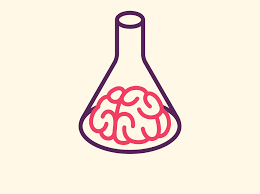
Breaking News
 US NAVY USELESS: China Activates "Land Route" to Drain Russian Silver
US NAVY USELESS: China Activates "Land Route" to Drain Russian Silver
 Lego's next-gen bricks make your creations interactive
Lego's next-gen bricks make your creations interactive
 Perhaps We Should Actually Be Focusing On Fixing America
Perhaps We Should Actually Be Focusing On Fixing America
Top Tech News
 The First Production All-Solid-State Battery Is Here, And It Promises 5-Minute Charging
The First Production All-Solid-State Battery Is Here, And It Promises 5-Minute Charging
 See inside the tech-topia cities billionaires are betting big on developing...
See inside the tech-topia cities billionaires are betting big on developing...
 Storage doesn't get much cheaper than this
Storage doesn't get much cheaper than this
 Laser weapons go mobile on US Army small vehicles
Laser weapons go mobile on US Army small vehicles
 EngineAI T800: Born to Disrupt! #EngineAI #robotics #newtechnology #newproduct
EngineAI T800: Born to Disrupt! #EngineAI #robotics #newtechnology #newproduct
 This Silicon Anode Breakthrough Could Mark A Turning Point For EV Batteries [Update]
This Silicon Anode Breakthrough Could Mark A Turning Point For EV Batteries [Update]
 Travel gadget promises to dry and iron your clothes – totally hands-free
Travel gadget promises to dry and iron your clothes – totally hands-free
 Perfect Aircrete, Kitchen Ingredients.
Perfect Aircrete, Kitchen Ingredients.
 Futuristic pixel-raising display lets you feel what's onscreen
Futuristic pixel-raising display lets you feel what's onscreen
 Cutting-Edge Facility Generates Pure Water and Hydrogen Fuel from Seawater for Mere Pennies
Cutting-Edge Facility Generates Pure Water and Hydrogen Fuel from Seawater for Mere Pennies
Brain Waves Have Been Detected Coming From 'Mini Brains' Grown in The Lab

This is a huge discovery that brings on possibilities for studying the early development of brain disorders.
It also has left some scientists feeling hesitant.
These lab-grown brains are known as organoids - three-dimensional, miniature, simplified versions of organs grown in a lab for research purposes, such as testing drug responses, or cell development under certain adverse conditions.
The research was first presented at a conference back in November 2018, and has now been peer-reviewed and published in Cell Stem Cell.
"The level of neural activity we are seeing is unprecedented in vitro," says neuroscientist Alysson Muotri from the University of California, San Diego.
"We are one step closer to have a model that can actually generate these early stages of a sophisticated neural network."

 Not Worth a Continental
Not Worth a Continental

